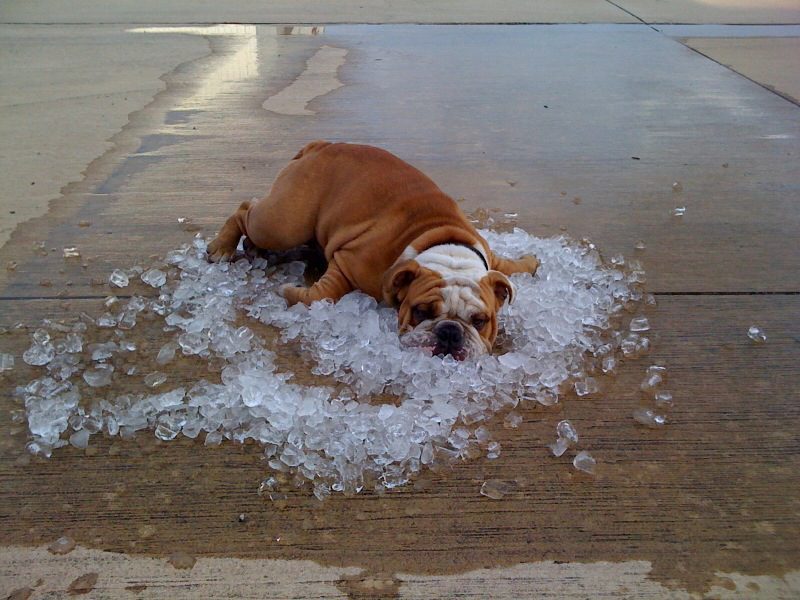
With the warm weather comes the increased risk of heat stroke (hyperthermia) in our pets. While we all enjoy having our dog join us when playing outside or taking a car ride, dogs cannot eliminate heat as effectively as we can and they can become overheated very quickly. Once the body temperature rises to 105 degrees , a true emergency exists.
Initially the pet appears distressed, and will pant excessively and become restless. As the hyperthermia progresses, the pet may drool large amounts of saliva from the nose and/or mouth. The pet may become unsteady on his feet. You may notice the gums turning blue/purple or bright red in color, which is due to inadequate oxygen.
It is imperative to seek veterinary care as soon as possible. While you are transporting your pet, you can begin to cool him by placing cool, wet towels over the back of the neck, in the armpits, and in the groin region. You may also wet the ear flaps and paws with cool water. Intravenous fluid therapy and monitoring for secondary complications such as kidney failure, development of neurologic symptoms, abnormal clotting, changes in blood pressure, and electrolytes abnormalities are typically recommended in cases of heatstroke.
Heat stroke can be prevented by taking caution not to expose a dog to hot and humid conditions. Never leave your dog in a car unattended, even if the car is parked in the shade. When left in a car on a relatively cool (70°F) day, a recent study from Stanford University Medical Center found the temperature within a vehicle may increase by an average of 40 degrees Fahrenheit within one (!) hour regardless of outside temperature. When outdoors, always make sure your dog is in a well-ventilated area with access to plenty of water and shady spots. -Kristy Meivogel, DVM